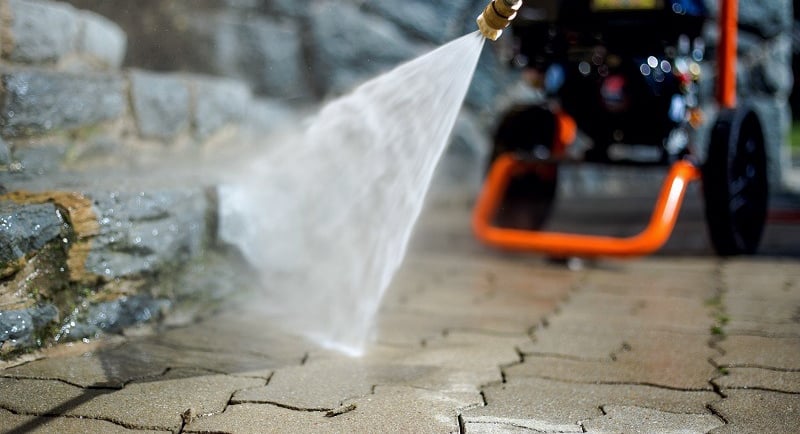How to use nozzle choice and distance to adjust pressure while using a pressure washer
Master your pressure washer by adjusting the nozzle and distance for perfect results! 🧼 Choose the right nozzle for the job and find the optimal distance to avoid damage while effectively cleaning. #PressureWashing #NozzleChoice #CleaningTips #DIY #HomeMaintenance #PowerWashing #PressureWasher
BASIC HOME MAINTENANCEEXTERIOR CLEANING SERVICE PROCESSESCURB APPEALPRESSURE WASHING SERVICES


Using nozzle choice and distance are effective ways to adjust the pressure and cleaning intensity when using a pressure washer. Here’s a detailed guide on how to use these factors to achieve the desired results:
1. Understand Nozzle Types and Angles
Pressure washer nozzles come in various colors and spray patterns, each suited for different cleaning tasks:
0° (Red) Nozzle: This provides a narrow, intense stream of water, delivering the highest pressure. It is typically used for tough, stubborn stains and detailed work.
15° (Yellow) Nozzle: This nozzle creates a wider fan spray than the 0° nozzle, making it suitable for heavy-duty cleaning tasks like removing grime and dirt from concrete or brick surfaces.
25° (Green) Nozzle: This nozzle offers a wider fan spray and is ideal for general cleaning tasks on surfaces like wood decks and siding.
40° (White) Nozzle: This produces a very wide spray pattern, suitable for light cleaning tasks, washing cars, and rinsing surfaces without applying too much pressure.
Soap Nozzle (Black): This nozzle is used to apply detergent or soap, typically with lower pressure, to loosen dirt and stains before rinsing.
2. Adjusting Pressure with Nozzle Choice
Higher Pressure (Narrower Nozzle): Use the 0° or 15° nozzles for more intense cleaning. These nozzles focus the water into a smaller area, increasing pressure and cleaning power. Be cautious with these nozzles as they can damage surfaces if used too close or with too much force.
Moderate Pressure (Mid-Angle Nozzle): The 25° nozzle provides a balance between pressure and coverage. It’s suitable for cleaning a variety of surfaces without the risk of damaging them.
Lower Pressure (Wider Nozzle): The 40° nozzle offers the lowest pressure and widest spray. Use this nozzle for gentle cleaning tasks and rinsing delicate surfaces.
3. Adjusting Pressure with Distance
Closer Distance: Holding the nozzle closer to the surface increases the pressure of the water stream. This is effective for tougher stains but requires caution to avoid damaging the surface. For example, if using the 0° or 15° nozzles, keep a distance of about 6-12 inches from the surface, depending on the pressure.
Farther Distance: Increasing the distance between the nozzle and the surface decreases the pressure. This is useful for cleaning larger areas or delicate surfaces without risking damage. With the 25° or 40° nozzles, you can maintain a distance of 12-24 inches for safe and effective cleaning.
4. Using Both Nozzle Choice and Distance Together
For Heavy Cleaning: Use a narrow nozzle (0° or 15°) at a closer distance for removing tough stains and grime. Ensure you move steadily and avoid staying in one spot to prevent surface damage.
For General Cleaning: Use a mid-angle nozzle (25°) at a moderate distance (12-18 inches) to clean larger areas like driveways, decks, or siding effectively.
For Delicate Cleaning: Use a wide-angle nozzle (40°) at a farther distance (18-24 inches) for gentle cleaning tasks like washing vehicles or rinsing off surfaces.
5. Additional Tips
Test First: Always test the chosen nozzle and distance on a small, inconspicuous area of the surface to ensure it doesn’t cause damage.
Adjust Gradually: Start with a wider nozzle and increase pressure as needed, adjusting the distance to find the optimal balance for your cleaning task.
Maintain Consistent Movement: When pressure washing, maintain a steady hand and consistent movement to ensure even cleaning and avoid creating streaks or damage.
By understanding and utilizing nozzle choice and distance, you can effectively control the pressure and cleaning intensity of your pressure washer, ensuring safe and efficient cleaning for various surfaces.
